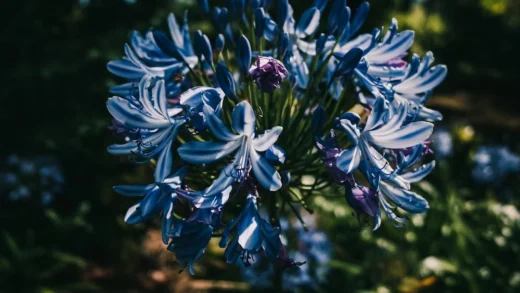Understanding the precise water requirements of moss rose is fundamental to cultivating this vibrant, sun-loving annual. As a succulent, its entire biology is geared towards surviving and thriving in conditions of heat and low moisture, storing water in its fleshy leaves and stems. This inherent drought tolerance makes it a wonderfully low-maintenance plant, but it also means that improper irrigation is one of the most common pitfalls for gardeners. Providing the right amount of water at the right time is the key to unlocking a spectacular, season-long display of its brilliant, rose-like flowers, while avoiding the fatal consequences of an overly attentive watering can.
The drought-tolerant nature of moss rose
The remarkable ability of moss rose to withstand dry conditions is directly linked to its succulent characteristics. The plant possesses thick, fleshy leaves and stems that are specifically adapted to store water. This internal reservoir allows the plant to endure extended periods without rainfall or irrigation, drawing upon its stored moisture to sustain itself. This adaptation is a key survival mechanism developed in its native habitats, which are often arid and sunny. Recognizing this trait is the first step toward providing appropriate care and avoiding the common mistake of overwatering.
This inherent drought resistance makes moss rose an excellent candidate for xeriscaping, rock gardens, and other water-wise landscaping projects. It is a plant that truly thrives on what many other ornamentals would consider neglect. Its low water needs not only make it an environmentally friendly choice in regions with water restrictions but also a perfect plant for busy gardeners or those with challenging, dry areas in their landscape, such as sunny slopes or the narrow strip of soil between a sidewalk and a street.
The root system of the moss rose is also adapted to its preferred dry conditions. It is relatively shallow and fibrous, designed to quickly absorb any available moisture from the soil surface, yet it is also highly susceptible to rot when left in standing water. Constantly saturated soil deprives the roots of oxygen, leading to decay and the eventual death of the plant. Therefore, the goal of any irrigation strategy should be to provide enough moisture to replenish the plant’s reserves without creating a soggy, anaerobic environment in the root zone.
It is also important to note that while mature plants are exceptionally drought-tolerant, young seedlings and newly transplanted specimens have higher water needs. During the initial stages of growth, when their root systems are still developing, they require more consistent moisture to become properly established. However, once the plants have settled in and begun to spread, their natural resilience takes over, and the frequency of watering can and should be significantly reduced to match their succulent nature.
More articles on this topic
Establishing a proper watering schedule
For newly sown seeds or recently transplanted seedlings, maintaining consistent soil moisture is crucial for successful establishment. During this early phase, the soil should be kept lightly and evenly moist, but never waterlogged. You can check this by touching the soil surface; it should feel like a wrung-out sponge. Watering gently with a fine spray every day or two, depending on the weather, is usually sufficient to support germination and early root growth without dislodging the seeds or tiny plants.
Once the moss rose plants are well-established, which is typically indicated by active new growth and spreading, you should transition to a deep and infrequent watering schedule. This approach encourages the roots to grow deeper into the soil in search of moisture, which in turn makes the plant even more resilient to drought. Instead of light, frequent sprinklings, provide a thorough soaking that moistens the root zone, and then allow the soil to dry out completely before you even consider watering again. This dry period is absolutely essential for the health of the plant.
The most reliable way to determine when to water mature moss rose is not by following a rigid calendar, but by checking the condition of the soil. Insert your finger about one to two inches deep into the soil near the base of the plant. If the soil feels dry at that depth, it is time to water. If you feel any moisture, wait another day or two and check again. In most garden settings, a deep watering once every one to two weeks during the summer is often sufficient, though this will vary based on your climate, soil type, and recent rainfall.
Plants grown in containers will require a different watering schedule than those in the ground. Pots, especially those made of porous materials like terracotta, dry out much more quickly due to the limited soil volume and increased exposure to sun and wind. You will likely need to water container-grown moss rose every few days during the hottest parts of the summer. However, the same principle applies: always check the soil for dryness before watering and ensure the pot has excellent drainage to let excess water escape freely.
More articles on this topic
Techniques for effective irrigation
When it is time to water your moss rose, the best technique is to apply water directly to the soil at the base of the plants. Using a soaker hose, drip irrigation, or a watering can with a long spout allows you to deliver moisture exactly where it is needed—at the root zone. This method is far superior to using an overhead sprinkler. It minimizes water waste through evaporation and, more importantly, it keeps the foliage and delicate flowers dry.
Keeping the leaves and blooms dry is a critical aspect of preventing fungal diseases. Wet foliage, especially when combined with high humidity and poor air circulation, creates the perfect breeding ground for problems like powdery mildew and botrytis. By watering at the soil level, you significantly reduce the risk of these diseases taking hold. If you must use a sprinkler, do so early in the morning so that the sun has ample time to dry the leaves completely before evening.
Watering deeply is another key technique for promoting a strong, healthy root system. A light sprinkling only moistens the very top layer of soil, which encourages shallow root growth and makes the plant less resilient during dry spells. When you do water, do so thoroughly enough that the moisture penetrates several inches down into the soil. This encourages the roots to grow downwards in search of this deeper moisture, creating a more robust and self-sufficient plant.
For container-grown plants, the technique for deep watering is to continue adding water until you see it running freely from the drainage holes at the bottom of the pot. This ensures that the entire root ball has been saturated. After this thorough watering, do not let the pot sit in a saucer of standing water, as this will lead to a waterlogged root zone. Always empty the saucer a few minutes after watering to allow the plant to drain completely.
Recognizing signs of overwatering and underwatering
Overwatering is the most common and most serious problem for moss rose. The initial signs can be subtle but will quickly become severe if the issue is not corrected. The leaves of an overwatered plant may start to turn yellow or pale green, and they can feel soft and mushy rather than firm and succulent. The base of the stems may become dark and water-soaked, a clear sign that root rot is setting in. The plant will look generally unwell and fail to thrive, even though it is receiving plenty of water.
As root rot progresses due to excessive moisture, the plant will lose its ability to absorb water and nutrients, ironically causing it to wilt. This wilting in wet soil is a definitive symptom of overwatering. If you suspect this is the case, you must cease all watering immediately and allow the soil to dry out completely. In severe cases, you may need to gently lift the plant from the soil to inspect the roots. If they are brown and mushy, trim them back to healthy tissue and replant in fresh, dry, well-draining soil.
While it is difficult to underwater a mature moss rose, it is not impossible, especially for plants in small containers during a heatwave. The signs of underwatering are quite distinct from those of overwatering. The succulent leaves will start to look shrivelled, wrinkled, or deflated as the plant uses up its internal water reserves. The foliage may take on a dull, lacklustre appearance, and the plant’s growth will be stunted. The flowers may wilt or drop prematurely.
If you observe the signs of underwatering, the solution is straightforward: provide a deep and thorough watering. The plant’s succulent leaves should plump up again within a few hours as they replenish their moisture stores. To prevent this from happening again, monitor the soil more closely during periods of extreme heat or drought, particularly for your container plants. Adjust your watering frequency to meet the increased demand, while still ensuring the soil has a chance to dry out between applications.
Adjusting watering for containers and different climates
Growing moss rose in containers requires a more attentive approach to watering compared to garden-grown plants. The limited volume of soil in a pot heats up and dries out much faster. In the height of summer, a small pot in direct sun may need watering every other day. The type of container also plays a significant role; porous terracotta pots will dry out significantly faster than plastic or glazed ceramic ones. Regardless of the frequency, the golden rule remains: test the soil for dryness before adding more water.
The climate in your region will heavily influence your watering schedule. In hot, arid climates with intense sun and low humidity, you will naturally need to water more often than someone gardening in a cooler, more temperate region with regular rainfall. Similarly, windy conditions can also accelerate the drying of soil, increasing the need for irrigation. It is essential to be observant and adapt your watering practices to your specific local weather patterns rather than adhering to a one-size-fits-all schedule.
Soil type is another critical variable that affects how often you need to water. A garden bed with naturally sandy, fast-draining soil will not retain moisture for long and may require more frequent watering than a bed with amended clay soil. Even though you may have improved a heavy soil’s structure, it will still hold onto water longer than sand. Understanding your garden’s specific soil composition will help you fine-tune your irrigation practices for optimal plant health.
Finally, always pay attention to rainfall. A significant summer downpour can provide all the moisture your moss rose needs for a week or more. After a rain event, be sure to suspend your regular watering schedule and check the soil moisture before resuming. An automatic sprinkler system can be a major threat to moss rose if it runs on a fixed timer without accounting for natural precipitation. It is always better to water based on the plant’s actual needs rather than a predetermined schedule.


















